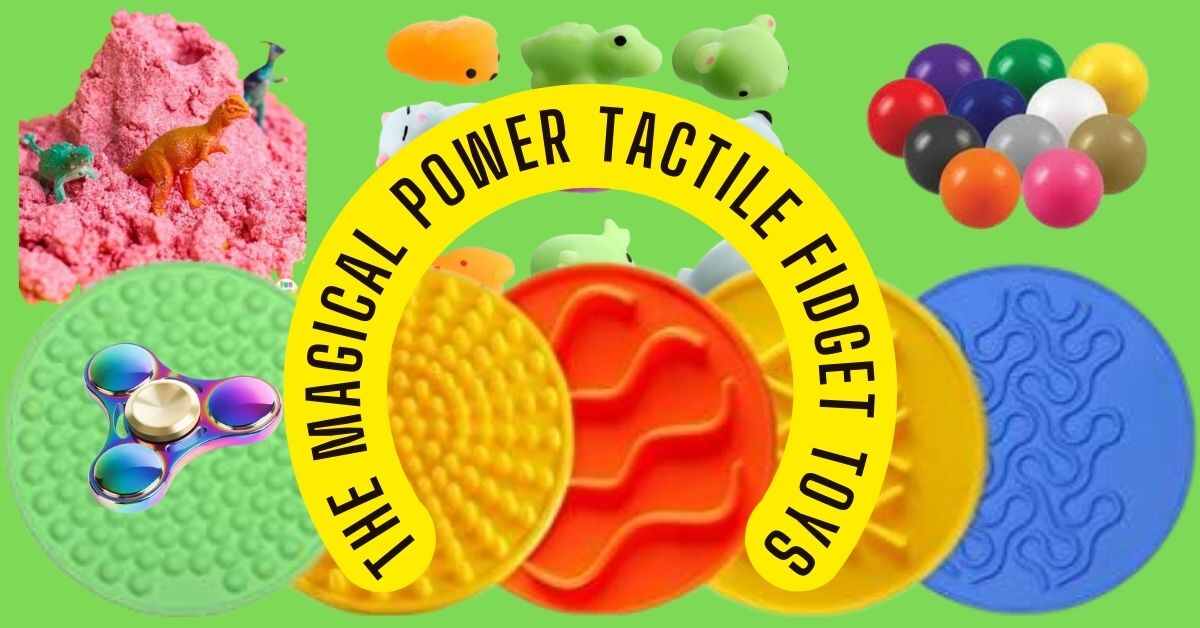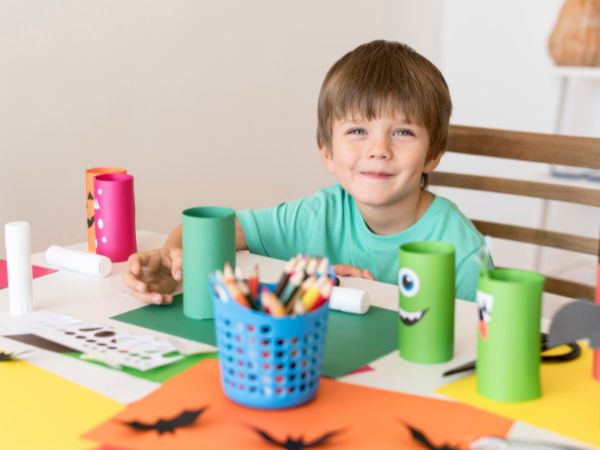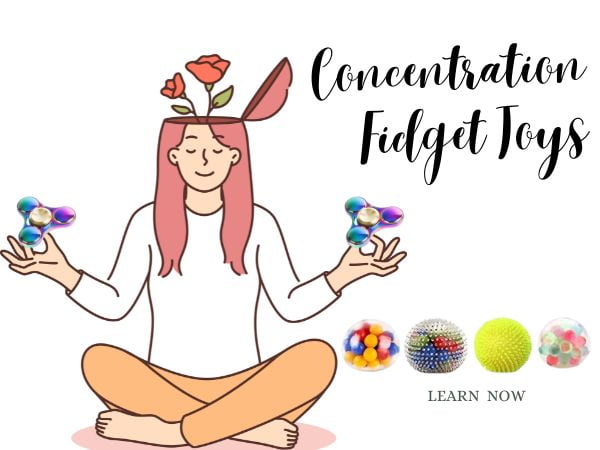1. Introduction
In today’s fast-paced environment, tactile fidget toys are a common coping method for stress and anxiety. These toys, which appeal to a wide range of consumers, offer a concrete means of stress alleviation and sensory exploration. They provide a range of choices, from tactile discs with lots of sensory information to calming spinner toys.
Table of Contents
This introduction aims to provide a more engaging and effective coping mechanism for a variety of problems by examining the applications, advantages, and inventive methods to incorporate these tools into daily routines for enhanced well-being.
2. Understanding tactile fidget toys
A. Definition of Tactile Fidget Toys
Devices intended to stimulate the senses through movement and touch are known as tactile fidget toys. With a variety of textures and sensations to keep the user interested, these toys are meant to be handled with the hands.
B. Historical Context
Tactile artifacts have been used for ages to engage the senses, and they have both cultural and therapeutic value. However, recent years have seen a rise in the popularity of tactile fidget toys, particularly as people’s knowledge of their potential advantages has grown.
C. Importance in Modern Context
Tactile fidget toys have grown in importance as instruments for fostering focus, relaxation, and general well-being in today’s fast-paced and frequently stressful environment. Their adaptability and accessibility make them useful in a variety of contexts, including offices and classrooms.
3. Types of Tactile Fidget Toys
Tactile fidget toys are a broad category of gadgets intended to stimulate the senses and encourage calm. The following are a few varieties of tactile fidget toys:
A. Spinner Toys
Spinner toys are handheld devices with a central bearing that allows the user to spin it. The spinning motion is not only visually appealing but also provides a tactile sensation, making them popular for stress relief and concentration.

- Uses:
- Provides a calming and focusing effect through spinning motion.
- Suitable for individuals who benefit from visual and tactile stimulation.
- User Reviews:
- Review 1: “I love my spinner toy! It’s my go-to stress reliever during work. The smooth spinning motion is so satisfying, and it really helps me stay focused. I have a few different designs, and they’re all durable and well-made.”
- Review 2: “Great for fidgety hands! I carry my spinner everywhere. It’s discreet, so I can use it in meetings or on public transportation. The variety of materials and colors is a nice touch.”
- Star Rating: Average rating: 4.2/5.
B. Squishy Toys
Squishy toys are soft, pliable objects that can be squeezed and squashed. They come in various shapes and sizes, offering a satisfying tactile experience. These toys are often used for stress relief and sensory exploration.
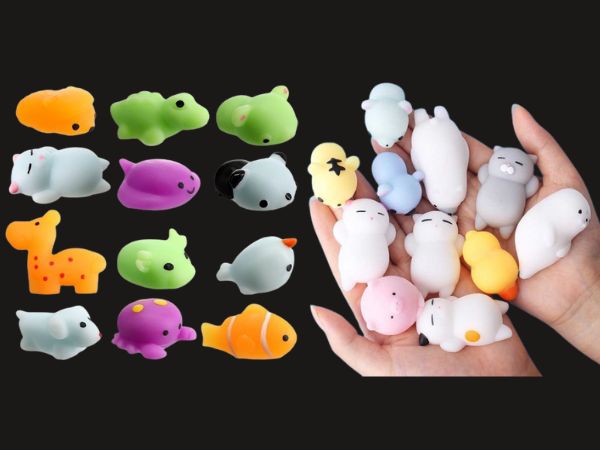
- Uses:
- Offers a soft and squeezable texture for stress relief.
- Ideal for individuals who prefer gentle tactile sensations.
- User Reviews:
- Review 1: “Squishy toys are my new obsession. They’re super soft and squishy, perfect for stress relief. I keep one on my desk and another in my bag. The material feels high-quality, and they bounce back to shape really well.”
- Review 2: “Cute and effective! I use squishy toys during long phone calls, and they keep me calm and focused. The small size is convenient, and they’re surprisingly durable”.
- Star Rating: Average rating: 4.5/5.
C. Tactile Discs
Tactile discs are flat, textured surfaces that users can touch and manipulate. They are designed to enhance sensory perception and fine motor skills. Tactile discs are commonly used in sensory integration therapy.

- Uses:
- Designed to enhance tactile exploration and sensory experiences.
- Useful for promoting focus and concentration during various activities.
- User Reviews:
- Review 1: “Tactile discs have been a game-changer for my son with sensory issues. They’re great for promoting sensory exploration and concentration. We use them during therapy sessions, and he loves the different textures”.
- Review 2: “Educational and fun! I got tactile discs for my classroom, and the kids love them. They’re engaging and help with focus. The quality is excellent, and they’re holding up well”.
- Star Rating: Average rating: 4.3/5.
D. Stress Balls
Stress balls are small, hand-held objects that can be squeezed and manipulated. The repetitive motion of squeezing a stress ball can help alleviate tension and stress, making them popular in office environments.

- Uses:
- Intended for hand exercise, stress relief, and muscle relaxation.
- Suitable for both physical and emotional stress reduction.
- User Reviews:
- Review 1: “Stress balls are a lifesaver for my hand strength. I use them daily, and I’ve noticed a real improvement. The different resistance levels are great, and they’re durable”.
- Review 2: “Simple and effective! I keep a stress ball at my desk for quick stress relief. It’s easy to squeeze and doesn’t lose its shape. The material feels good in hand”.
- Star Rating: Average rating: 4.4/5.
E. Kinetic Sand
Kinetic sand is a moldable and squeezable sand-like substance that provides a unique tactile experience. It can be shaped and molded, offering a sensory-rich play experience for both children and adults.

- Uses:
- Offers a tactile and soothing experience through moldable sand.
- Encourages creativity and sensory exploration.
- User Reviews:
- Review 1: “Kinetic sand is therapeutic and mess-free! My kids and I enjoy playing with it together. It’s easy to mold and doesn’t stick to surfaces. The fact that it’s easy to clean is a huge plus”.
- Review 2: “Relaxing and creative! I use kinetic sand during breaks to unwind. It’s like a stress ball that you can mold. The texture is great, and it doesn’t dry out”.
- Star Rating: Average rating: 4.6/5.
4. Benefits of Using Tactile Fidget Toys
A. Stress Relief
The use of tactile fidget toys to relieve stress is well known. Working with these toys can be a good way to relieve stress and encourage serenity and relaxation.
B. Improved Focus
Playing with tactile fidget toys can improve focus and concentration, especially for people who might benefit from sensory stimulation. They are therefore useful resources in both professional and educational contexts.
C. Sensory Stimulation
Fidget toys with tactile elements offer a variety of sensory experiences, enabling people to experiment with various textures and sensations. For those with difficulties with sensory processing, this stimulation may be helpful.
D. Anxiety Management
Tactile fidget toys are useful tools for anxiety management because of their calming qualities. Playing with these toys can be a reassuring and centered experience.
E. Therapeutic Applications
Beyond daily use, tactile fidget toys are used in therapeutic contexts to help with fine motor skill development and sensory processing, such as in occupational therapy and sensory integration therapy.
5. Choosing the Right Tactile Fidget Toy
A. Understanding Personal Preferences
When choosing a tactile fidget toy, personal preferences must be taken into account. While some people might find comfort in squeezing a stress ball, others might prefer the smooth motion of a spinner. Comprehending these inclinations guarantees a more customized and efficient encounter.
B. Considerations for Different Age Groups
Age is a major factor when selecting the right fidget toy. Though adults could find more complicated and elaborate designs like kinetic sand or tactile discs satisfying, younger children might benefit from softer and safer options like squishy toys.
C. Assessing Sensory Needs
Everybody’s sensory requirements are different. For relaxing benefits, some people could want tactile input, while others might need more intense stimulation. Identifying these needs facilitates the process of choosing fidget toys that complement the intended sensory experience.
6. DIY Tactile Fidget Toys
A. Creative Ideas for Homemade Fidget Toys
It can be a satisfying and economical project to make tactile fidget toys at home. You may experiment with different textures to create a homemade squishy toy, make textured discs out of everyday materials, or make stress balls from ordinary objects. Here are some ideas for crafting DIY tactile fidget toys:
1. Stress Balls:

- Materials Needed:
- Balloons
- Flour or rice
- Funnel
- Instructions:
- Stretch out a balloon to make it more pliable.
- Attach a funnel to the balloon opening.
- Pour flour or rice into the balloon using the funnel.
- Tie a knot to seal the balloon, creating a stress ball.
- Squeeze and manipulate the stress ball to relieve tension.
2. Textured Discs:
- Materials Needed:
- Cardboard or foam sheets
- Various textured materials (sandpaper, fabric, bubble wrap)
- Glue
- Instructions:
- Cut out small discs from cardboard or foam sheets.
- Select different textured materials for each disc.
- Glue the textured materials onto the discs.
- Allow the glue to dry, and you have textured discs for tactile exploration.
3. DIY Squishy Toy:
- Materials Needed:
- Memory foam or sponge
- Fabric
- Needle and thread
- Filling material (cotton, beans)
- Instructions:
- Cut two identical shapes from the fabric for your squishy toy.
- Sew the edges together, leaving a small opening.
- Flip the fabric inside out.
- Cut the memory foam or sponge to fit inside the fabric shape.
- Fill the fabric with the foam or sponge and additional filling material.
- Stitch the opening closed, creating a DIY squishy toy.
4. Kinetic Sand Sensory Kit:
- Materials Needed:
- Play sand
- Cornstarch
- Dish soap
- Food coloring (optional)
- Instructions:
- Mix play sand and cornstarch in a bowl (2:1 ratio).
- Add a small amount of dish soap for a moldable texture.
- Optionally, add a few drops of food coloring for color.
- Mix thoroughly to create your own kinetic sand.
- Store in an airtight container for future use.
B. Benefits of DIY Fidget Toys
Handmade fidget toys add a personal touch and let users customize the sensory experience to their preferences. Topping the benefits altogether, making these toys may also be a creative and relaxing experience.
7. Tactile Fidget Toys in Education
A. Enhancing Concentration in Classroom Settings
Because they assist kids stay focused, tactile fidget toys have demonstrated promise in educational settings. A more concentrated and favorable learning environment can be created by using non-disruptive solutions like textured discs or discrete stress balls.

B. Addressing the Sensory Needs of Students
Tactile fidget toys can be quite helpful for students who struggle with sensory processing. These toys can be used by educators and teachers to meet the unique sensory needs of their pupils, creating a more welcoming and encouraging learning environment.
C. Case Studies and Success Stories
Emphasizing actual instances of tactile fidget toys being successfully incorporated into the classroom can shed light on the beneficial effects these devices have on students’ conduct, focus, and general well-being.
8. Tactile Fidget Toys in the Workplace
A. Boosting Productivity
You may boost productivity at work by introducing tactile fidget toys. In the end, a more productive work environment results from employees using these toys to reduce stress and improve focus during breaks.
B. Creating Inclusive Work Environments
The use of fidget toys promotes inclusion by recognizing and meeting the various sensory needs of workers. This fosters an environment at work where people appreciate the comfort and well-being of the person.
C. Employer Perspectives
Examining the perspectives of employers regarding the integration of tactile fidget toys might yield significant knowledge on the advantages for the organization, contentment among workers, and possible enhancements in the general dynamics of the workplace.
9. Trends in Tactile Fidget Toy Designs
A. Innovative Materials
To improve the sensory experience, designers of tactile fidget toys are experimenting with different materials. A variety of tactile sensations can be experienced by consumers through the use of innovative textures such as silicone, fabric, or even eco-friendly materials.
B. Technology Integration
Certain fidget toys incorporate technological features like interactive parts or smart sensors. The goal of this fusion of cutting-edge technology and conventional tactile interactions is to produce a more captivating and immersive user experience.
C. Emerging Design Concepts
There are always fresh design ideas coming up that offer original structures, patterns, and forms. Because of this trend, users can choose fidget toys that suit their requirements and tastes because they can be personalized.
10. Addressing Concerns and Misconceptions
A. Potential Distractions
Many people find that fidget toys help them focus better, yet in other situations, there have been worries about potential distractions. Addressing this issue is made easier by knowing when and where to utilize these toys.
B. Overcoming Stigma
Fidget toy use is sometimes stigmatized, particularly in professional or educational settings. One way to get past this stigma is to raise awareness of their advantages and normalize their use.
C. Misuse and Guidelines
It’s important to set rules regarding how fidget toys should be used. Teaching users helps avoid abuse and guarantees that the toys fulfill their intended function, especially in educational or therapeutic settings.
11. Tactile Fidget Toys and Mental Health
A. Connection to Mental Well-being
Studies indicate a beneficial relationship between mental health and the use of tactile fidget toys. These toys can help with emotional control and stress reduction.
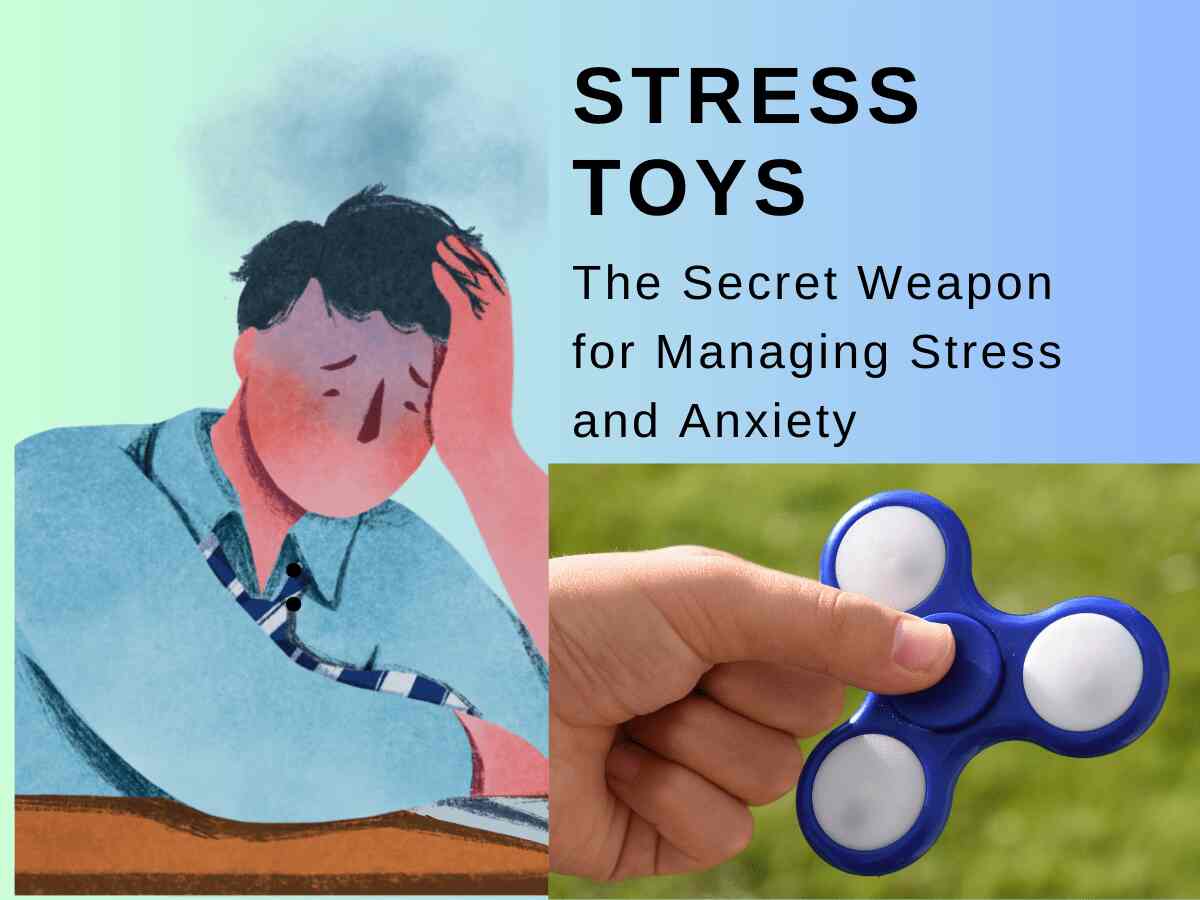
B. Therapeutic Interventions
The use of tactile fidget toys in therapeutic interventions for diseases like anxiety, autism spectrum disorders, and ADHD is growing. These resources help therapists achieve a range of therapy objectives.
C. Expert Opinions
Professionals in the fields of psychology and occupational therapy provide valuable perspectives on the possible advantages of tactile fidget toys, highlighting their function in fostering mental health and enhancing concentration and focus.
12. Research and Studies on Tactile Fidget Toys
A. Scientific Findings
Research has investigated the effects of tactile fidget toys on stress levels, sensory processing, and cognitive performance. Results add to the increasing amount of data demonstrating their efficacy.
B. Academic Research
Academic studies are being conducted by education and psychology researchers to investigate the effects of fidget toys on students’ performance and well-being in learning contexts.
C. Areas for Further Study
More research is needed to examine certain aspects of the growing popularity of tactile fidget toys, including long-term consequences, best practices for usage, and the ability to customize devices to meet the needs of individual users.
13. Testimonials and Personal Experiences
A. User Stories
People talk about their own experiences with tactile fidget toys, emphasizing the beneficial effects these devices have had on their everyday lives, interpersonal connections, and general well-being.
B. Impact on Daily Lives
Testimonials provide important insights into the real-world effects of fidget toys by highlighting their practical advantages, such as stress reduction, enhanced focus, and better emotional regulation.
C. Diverse Perspectives
The diverse viewpoints of users from a range of age groups, occupations, and backgrounds highlight the adaptability of tactile fidget toys and how they can satisfy a variety of requirements and tastes.
14. Incorporating Tactile Fidget Toys in Therapy
A. Occupational Therapy
Occupational therapists talk about using fidget toys in treatment sessions and stress how they can help patients with fine motor skill development, emotional management, and sensory processing issues.
B. Behavioral Therapy
Behavioral therapists investigate the potential of tactile fidget toys as behavioral therapy tools that support people in controlling their impulses, lowering their anxiety, and encouraging positive behaviors.
C. Integrating Fidget Toys in Treatment Plans
Case studies show how therapists address particular therapeutic goals and increase the overall efficacy of therapies by using tactile fidget toys in entire treatment plans.
15. Environmental Impact of Tactile Fidget Toys
A. Materials Used
An investigation into the materials frequently used to make fidget toys, taking into account the effects they have on the environment and possible substitutions that put sustainability first.
B. Sustainable Options
highlighting new developments in the manufacturing of environmentally safe and sustainable tactile fidget toys and highlighting initiatives to reduce the goods’ environmental impact.
C. Recycling and Disposal
Concerns regarding the environmental impact of these often-used objects are addressed through guidelines and recommendations for the appropriate disposal and recycling of tactile fidget toys.
16. Legal and Safety Considerations
A. Product Regulations
Globally, there are several regulations about the safety and manufacturing standards of fidget toys. Following these rules is crucial to guaranteeing user safety, especially when it comes to toys meant for young children.
B. Child Safety Standards
Age-appropriateness of tactile fidget toys is determined in large part by compliance with child safety requirements. Adherence to these guidelines is essential to avert possible risks to children.
C. Consumer Guidelines
Encouraging customers to buy from reliable suppliers and adhere to usage instructions helps to guarantee the security and effectiveness of tactile fidget toys.
17. Global Perspectives on Tactile Fidget Toys
A. Cultural Acceptance
Different cultures have different attitudes toward tactile fidget toys. While some civilizations welcome their use, others could have a different opinion. To encourage greater acceptance, it is essential to comprehend cultural viewpoints.
B. International Trends
Global trends in the designs and preferences of fidget toys vary. Global markets impact the development of these toys, and local tastes determine the path the sector takes.
C. Regional Variations
The popularity and acceptance of tactile fidget toys vary significantly between regions, highlighting the necessity for a sophisticated understanding of cultural contexts in the marketing and promotion of these products.
18. Industry Spotlight: Tactile Fidget Toy Manufacturers
A. Market Leaders
Leading brands dominate the market with tactile fidget toys that are well-liked and well-known. These sector leaders frequently establish norms and trends for excellence and creativity.
B. Innovative Companies
Smaller, more creative businesses enhance the sector by bringing in distinctive features and designs. Their inventiveness frequently results in the creation of niche goods that satisfy particular consumer tastes.
C. Small-scale Artisans
Independent artists and makers offer unique, handcrafted, limited-edition tactile fidget toys with unique designs and craftsmanship, adding a personalized touch to the market.
19. Evolution of Tactile Fidget Toys
A. Historical Evolution
Since their creation, tactile fidget toys have experienced substantial design and functionality modifications. Knowing their past development offers insights into the elements influencing their current popularity.
B. Technological Advancements
Technological developments have had a significant influence on the features and functionalities of contemporary fidget toys. The user experience now has additional aspects thanks to the integration of smart technology.
C. Future Predictions
It is projected that the development of tactile fidget toys will continue, with a focus on technology, sustainability, and meeting a range of user needs. Forecasts indicate that there will be more options available to suit a wider range of preferences.
Here’s a table discussing the evolution of tactile fidget toys:
| Era | Description | Notable Innovations | Emotional Impact |
| Pre-20th Century | Simple, rustic tools offer a personal touch. | Basic materials like stones and wood. | Simple, rustic tools offering a personal touch. |
| 1970s – 1980s | Emergence of stress balls and handheld squeeze toys. | Introduction of rubber and foam materials. | Relief in the palm of your hand, a tangible comfort. |
| Late 1990s | Rise of the first spinner toys, gaining popularity. | Incorporation of bearings for smooth spinning. | Mesmerizing and calming, a new dimension of engagement. |
| Simple, rustic tools offer a personal touch. | Diversification with squishy toys and textured discs. | Use of soft, squeezable materials for sensory appeal. | Comforting textures, an exploration of tactile variety. |
| 2010s | Technological integration, smart fidget toys with sensors. | Interactive features and digital connectivity. | Infusing play with technology, a modern twist on comfort. |
| Present | Ongoing creativity, DIY options, and eco-friendly materials. | The early 2000s | Empowering individuals to craft their stress-relief tools. |
20. Where to Purchase Tactile Fidget Toys
A. Online Retailers
Many websites provide a large assortment of tactile fidget toys, making them convenient and reachable to people all over the world. Well-known e-commerce websites frequently offer a wide variety of choices.
B. Physical Stores
Brick-and-mortar establishments continue to be important places to buy tactile fidget toys. These include toy stores, educational supply stores, and specialty retailers. When people shop in person, they can physically evaluate and select the toys they want.
21. Conclusion
A. Key Takeaways
Examining tactile fidget toys reveals a variety of uses for them, including therapeutic interventions and stress alleviation. The development of the industry, its incorporation into therapy, and its worldwide viewpoints highlight the toys’ complex nature.
B. Recap of Benefits
Fidget toys with tactile elements have therapeutic uses, better concentration, and relieve tension. The fact that these toys may be used in a variety of contexts, such as the workplace and classroom, highlights their adaptability and beneficial effects.
C. The Future Outlook
Touchscreen fidget toys have a bright future ahead of them thanks to continued innovative developments, growing acceptability in therapy, and an emphasis on sustainability. As the business develops further, these gadgets need to significantly contribute to improving wellbeing.
22. FAQs
1. What are tactile objects?
Ans: Tactile objects are items that can be touched and felt, providing sensory experiences.
2. What are tactile tools?
Ans: Tactile tools are instruments designed for hands-on interaction, engaging the sense of touch.
3. What is a tactile activity?
Ans: A tactile activity involves using the sense of touch to explore and interact with objects.
4. Why is tactile play important?
Ans: Tactile play is important for sensory development, fostering cognitive skills, and enhancing learning in children.
5. Are fidget toys only for individuals with specific conditions?
Ans: No, fidget toys can be beneficial for anyone seeking stress relief or improved focus.
6. Can children use fidget toys in school?
Ans: Many educators endorse the use of fidget toys in classrooms to help children concentrate.
7. How do I choose the right fidget toy for my preferences?
Ans: Consider your sensory preferences, age, and the desired tactile sensations when choosing a fidget toy.
8. Are DIY fidget toys as effective as commercially available ones?
Ans: DIY fidget toys can be just as effective if tailored to individual preferences and needs.
9. Can fidget toys replace other coping strategies for mental health?
Ans: Fidget toys are a helpful addition to coping strategies but should not replace professional mental health interventions when needed.
Disclaimer:
The content provided in this article is for informational purposes only and should not be considered as professional advice. The information presented is based on research and general knowledge up to the date of publication.
Readers are encouraged to consult with relevant professionals, such as healthcare providers, educators, or therapists, to assess their individual needs and circumstances.
